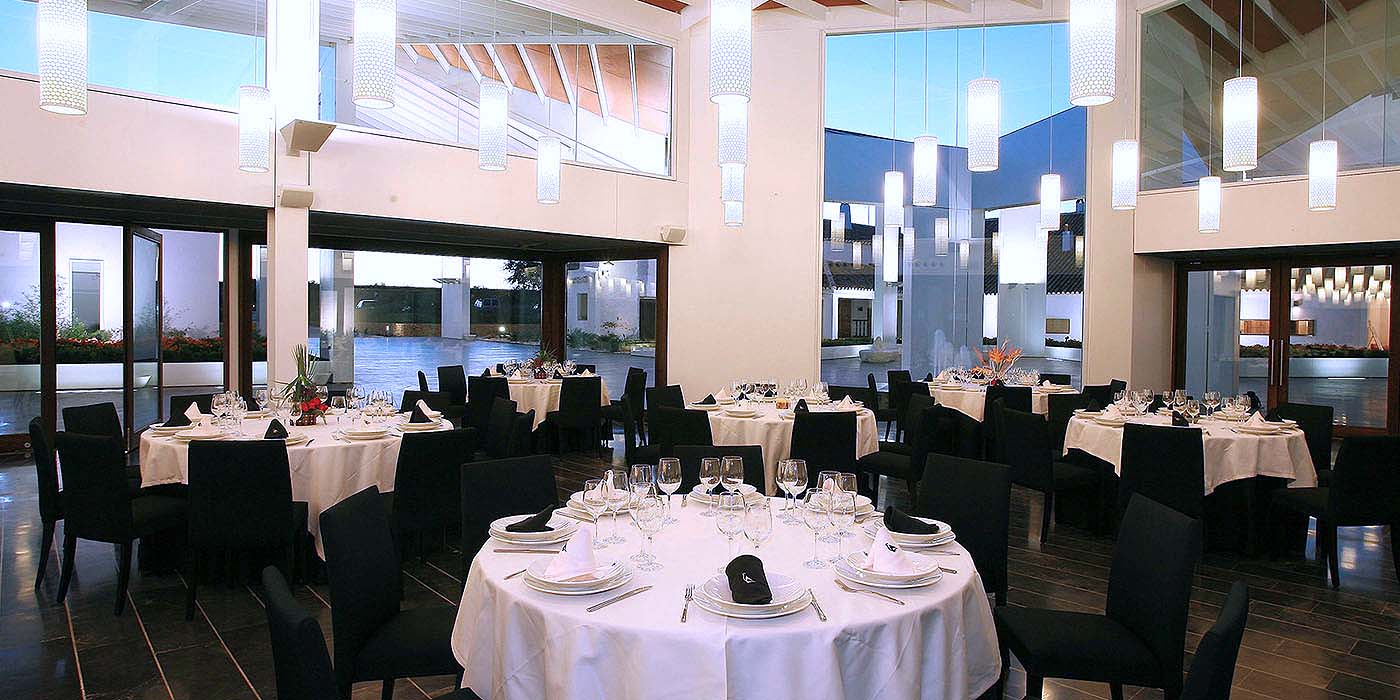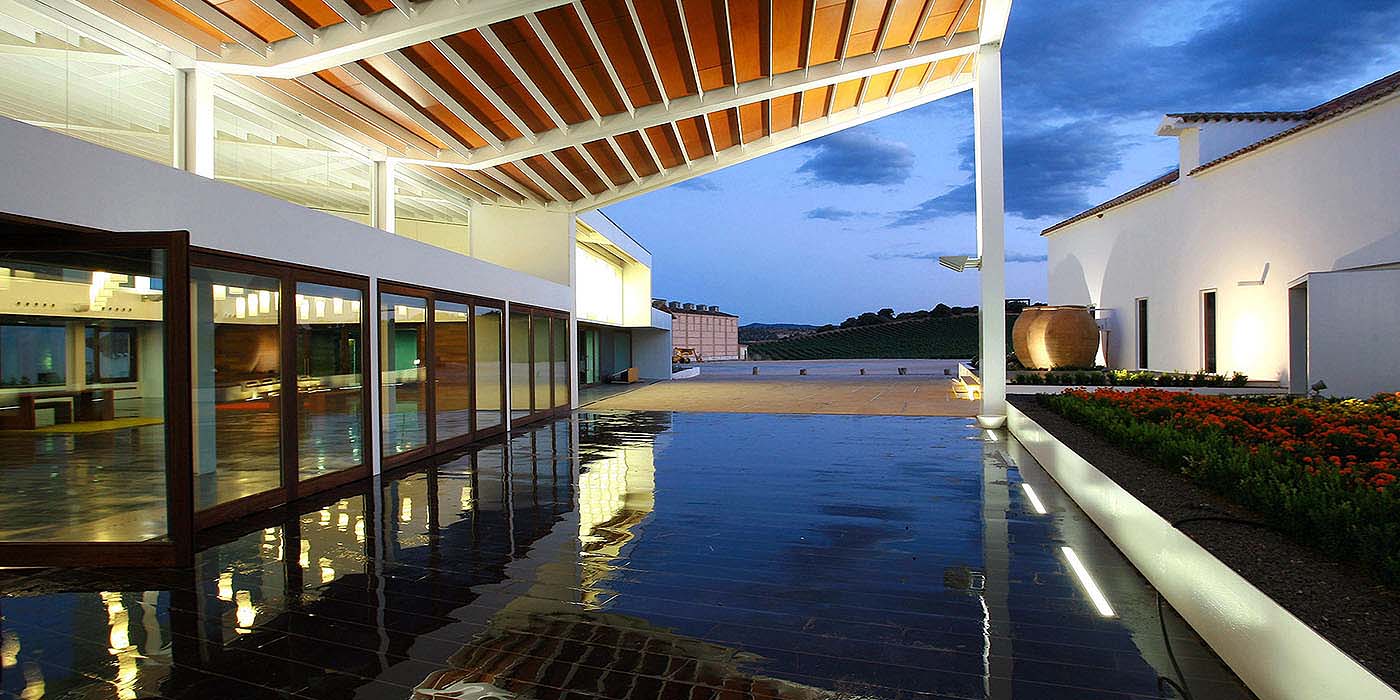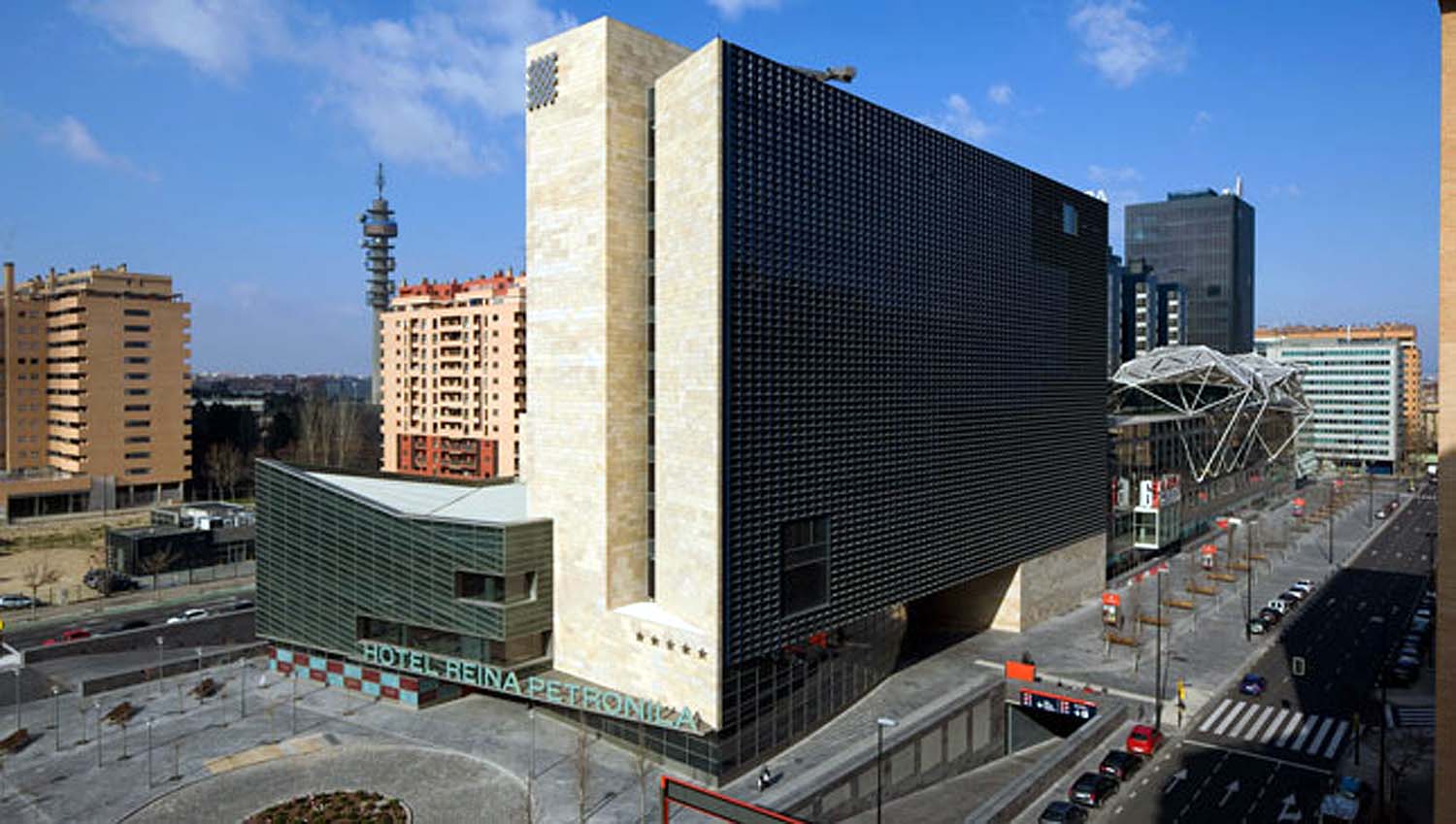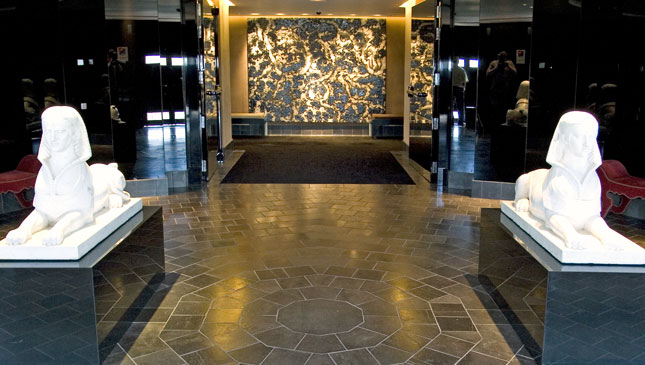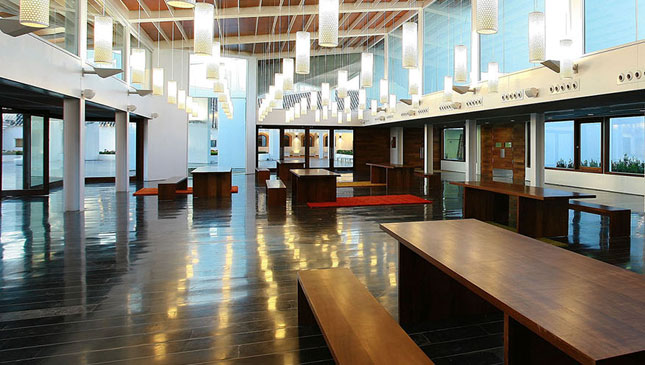
2,000 m2 internal and external stone cladding for an iconic winery
Located in the municipality of Valdepeñas (with its own Designation of Origin) in Castilla-La Mancha, Bodegas Reales were lined inside and out with pieces of Gramablack. In total, almost 2,000 m2 were paved with pieces of different sizes and a constant thickness of 5cm, guidelines set by project architects Ángela García de Paredes and Ignacio García Pedrosa. In the indoor areas honed tiles were used to give a fine, smooth matte texture that highlights the black hue of the stone. By contrast, a serrated finish was used on the outside, natural and lightly textured by the marks left by the cutting discs. The result is a homogeneous greyish hue that sustains the interior finish and meets the conditions for slipperiness in both dry and wet conditions required by the safety regulations in the Technical Building Code
Sustainable
Stone is a natural product that does not pollute or consume CO2 during its manufacturing process. Its carbon footprint is solely limited to the contributions derived from being processed in the factory and from transport. In addition, it is a 100% reusable and recyclable material, features that help minimise environmental impact.

